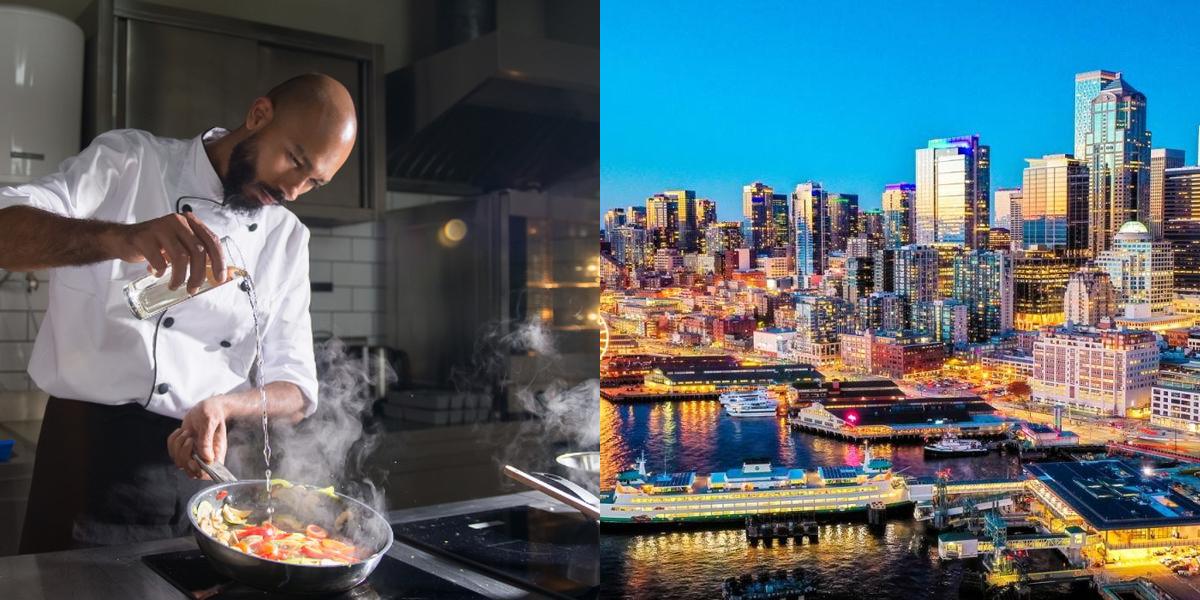How to Become a Chef in Washington

Are you passionate about cooking and dreaming of becoming a chef? Washington state offers numerous opportunities for culinary arts professionals. In this blog post, we will explore what culinary arts is all about, where culinary arts professionals work, the requirements to become a culinary arts professional in Washington, and where you can find culinary arts classes in the state.
How do I get a job as a Culinary Arts?
Once you have obtained your culinary arts certification, you are ready to start your career in the culinary industry. Here are some steps you can take to get a job as a culinary arts professional:
-
Build a strong resume: Your resume is your first impression to potential employers, so it is important to make it stand out. Highlight your culinary education, certifications, and any relevant work experience. Include specific details about your skills, such as the types of cuisines you are proficient in, any awards or recognition you have received, and any special techniques you have mastered.
-
Network within the industry: Networking is key to finding job opportunities in the culinary arts field. Attend culinary events, join professional organizations, and connect with other professionals in the industry. Utilize social media platforms such as LinkedIn to expand your network and stay updated on job openings.
-
Gain practical experience: While completing your culinary arts program, take advantage of any opportunities to gain practical experience. This can include internships, externships, or part-time jobs in restaurants or catering companies. Practical experience not only enhances your skills but also helps you build connections within the industry.
-
Apply for jobs: Keep an eye out for job postings in culinary magazines, online job boards, and the websites of restaurants or hotels. Tailor your application to each job opportunity by highlighting the skills and experiences that are most relevant to the position. Consider reaching out to chefs or restaurant owners directly to inquire about job openings that may not be publicly advertised.
-
Prepare for interviews: Before attending an interview, research the company and familiarize yourself with their menu, style of cuisine, and overall brand. Practice answering common interview questions and be prepared to showcase your culinary skills if requested. Dress professionally and bring copies of your resume and any certifications you have obtained.
-
Continue learning and growing: The culinary arts industry is constantly evolving, so it is important to stay updated on the latest trends and techniques. Take advantage of opportunities for professional development, such as attending workshops or seminars, participating in cooking competitions, or taking advanced culinary courses. By continuously learning and improving your skills, you can enhance your job prospects and advance in your culinary career.
Career Paths and Opportunities after Becoming a Culinary Arts
After obtaining your culinary arts certification and gaining some experience in the field, there are various career paths and opportunities you can explore. Here are a few examples:
-
Chef de Partie: This is a mid-level position in the kitchen hierarchy. As a Chef de Partie, you will be responsible for a specific section of the kitchen, such as sauces, pastries, or seafood. This role allows you to further develop your culinary skills and gain leadership experience.
-
Sous Chef: The role of a Sous Chef is to assist the Executive Chef in overseeing the kitchen operations. Sous Chefs are responsible for managing the kitchen staff, ensuring food quality and consistency, and assisting with menu planning. This position requires strong leadership and organizational skills.
-
Executive Chef: The Executive Chef is the head chef in a restaurant or hotel kitchen. They are responsible for creating menus, managing the kitchen staff, ordering ingredients, and ensuring the overall quality of the food. Executive Chefs often have years of experience and advanced culinary skills.
-
Restaurant Owner: If you have an entrepreneurial spirit, you may consider opening your own restaurant or food establishment. This path requires not only culinary skills but also business acumen, as you will be responsible for managing finances, marketing, and customer service.
-
Food Stylist: Food styling is a niche career path within the culinary arts industry. Food stylists work closely with photographers and art directors to create visually appealing and appetizing food images for advertisements, cookbooks, and magazines. This role requires creativity, attention to detail, and an understanding of food presentation techniques.
-
Catering Chef: Catering chefs work in catering companies or as freelancers, providing food services for events such as weddings, parties, and corporate functions. This role requires the ability to create diverse menus, manage food preparation for large groups, and coordinate with event planners and clients.
These are just a few examples of the career paths and opportunities available after becoming a culinary arts professional. The culinary industry offers a wide range of options, allowing you to explore different cuisines, styles of cooking, and work environments.
How Much does a Chef make?
The salary of a chef can vary depending on several factors, including experience, location, and the type of establishment they work in. On average, chefs in the United States earn a median annual salary of around $51,530, according to the Bureau of Labor Statistics. However, starting salaries for entry-level chefs can be lower, typically ranging from $25,000 to $35,000 per year.
It's important to note that these figures are just averages, and individual salaries can vary significantly. Experienced and well-known chefs who work in high-end restaurants or run their own establishments can earn six-figure salaries or even more.
Final Thoughts
Obtaining a culinary arts certification and pursuing a career in the culinary industry can be a rewarding and fulfilling journey. By completing a culinary arts program, gaining practical experience, and continuously learning and growing, you can position yourself for success in this competitive field.
Remember to network within the industry, tailor your resume and applications to each job opportunity, and prepare for interviews. As you progress in your career, consider exploring different career paths and opportunities, such as becoming a Sous Chef, Executive Chef, or even opening your own restaurant.
With dedication, passion, and a commitment to continuous improvement, you can turn your love for cooking into a successful and fulfilling culinary arts career.
If you're thinking of a new career path, Dreambound offers in-depth guides to understand various job choices:





